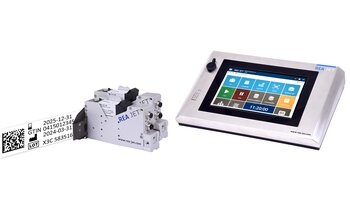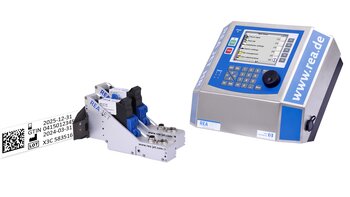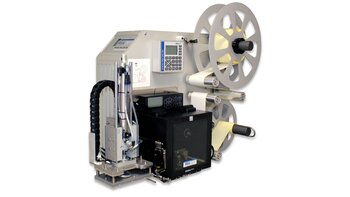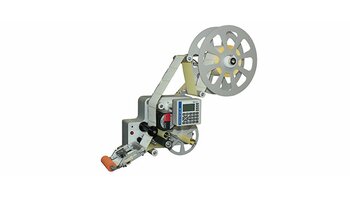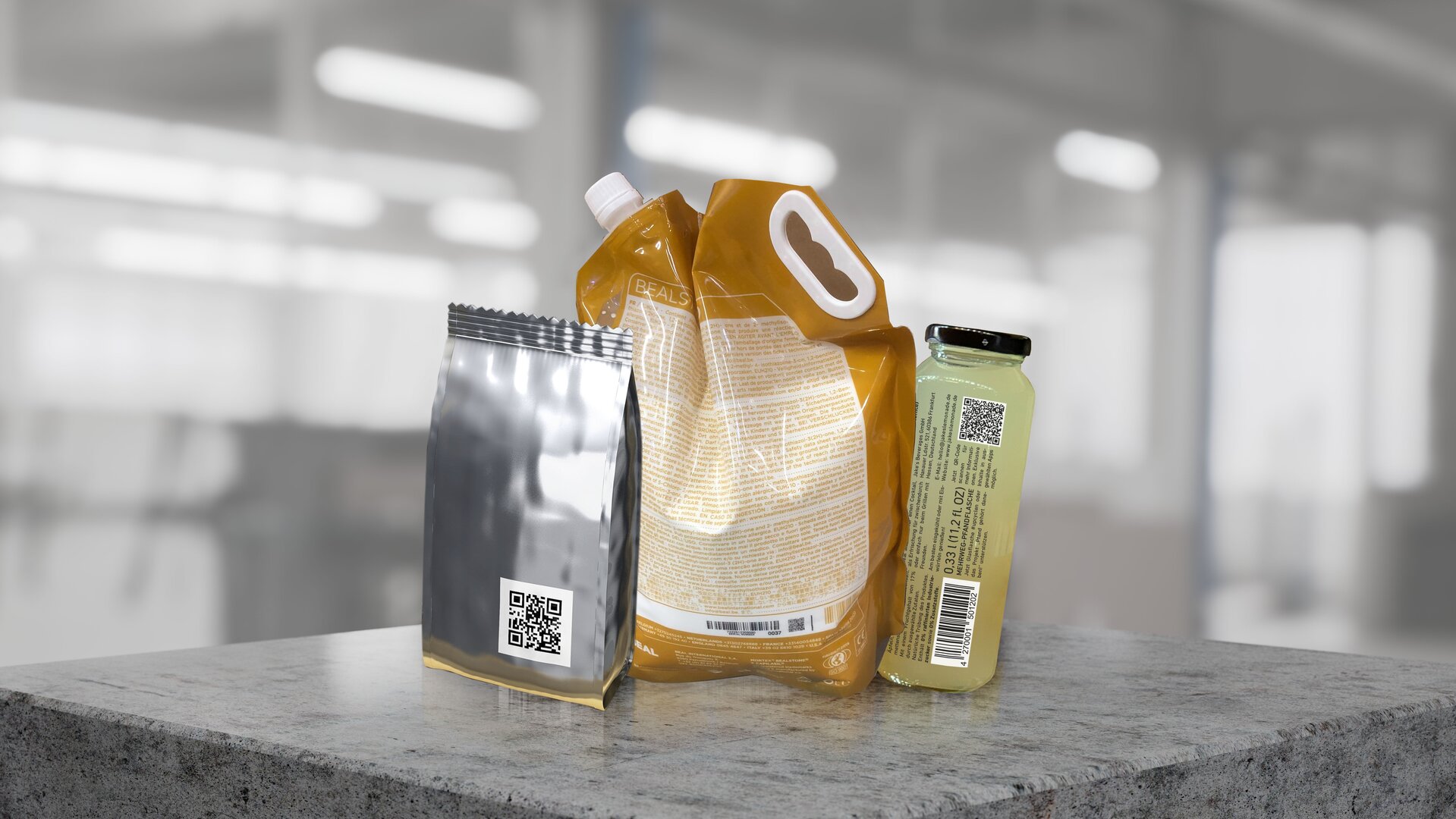2D afrekencode met GS1 Digital Link
Gestandaardiseerde barcodes zoals EAN-13 of UPC-A hebben de logistiek en de detailhandel gerevolutioneerd. Nu is er een nieuwe revolutie op komst. Bedrijven over de hele wereld moderniseren hun verpakkingen en productmarkering en verbeteren de hele informatiestroom door 2D-codes te printen.

Tot nu toe werden EAN-13 barcodes gebruikt als kassacodes in de detailhandel en logistiek. Door hun zeer beperkte gegevenscapaciteit en toenemende connectiviteit zijn ze echter gewoon niet meer hedendaags. Van fabrikanten wordt steeds meer verwacht dat ze productinformatie op een eenvoudige en toegankelijke manier aanbieden. Of dat nu is voor consumenten die meer willen weten over een bepaald product, of voor groothandelaren en retailers die hun efficiëntie willen optimaliseren door toegang te krijgen tot nauwkeurige productgegevens en informatie over de toeleveringsketen.
Een gestandaardiseerde oplossing voor digitale produktmarkering ontwikkeld door de GS1 organisatie combineert bestaande GS1 standaarden met een nieuwe universele code - de GS1 Digital Link. Met de nieuwe GS1 Digital Link standaard worden GS1 identifiers - zoals de GTIN - gekoppeld aan het internet. Met deze nieuwe standaard kan verschillende informatie over een product flexibel beschikbaar worden gemaakt via één enkele link. Dit betekent dat de informatie op elk moment kan worden aangepast zonder dat de gegevensdrager, zoals de QR code, en de inhoud ervan moeten worden vernieuwd.
Bestaande GS1 identifiers, zoals de GTIN, blijven geldig en worden ingebed in een standaard-compliant URL van de merkeigenaar.
Sinds 2021 zijn de GS1 2D DataMatrix, de QR code met GS1 Digital Link en de DataMatrix code met GS1 Digital Link goedgekeurd als afrekencodes op het verkooppunt. Migratie naar GS1 Digital Link kan worden uitgevoerd zonder grote veranderingen in bestaande systemen en processen. Het doel is een wereldwijde migratie naar 2D kassacodes tegen 2027.

De GS1 Digital Link kan worden gebruikt met elk type 2D-code, maar meestal met een QR code. Consumenten kunnen dan hun smartphone gebruiken om de QR code op de productverpakking te scannen, waardoor ze worden doorverwezen naar een bepaalde website. Afhankelijk van de gebruiker kan verschillende informatie worden weergegeven in verschillende talen en formaten. Dit komt omdat het conceptueel één en dezelfde 2D-checkoutcode is die wordt geopend. Maar verschillende apps leiden gebruikers naar totaal verschillende bestemmingen. De ene app biedt consumenten bijvoorbeeld uitgebreide productinformatie zoals herkomst, ingrediënten of de houdbaarheidsdatum (BBD). Met andere apps is het weer mogelijk om maatregelen voor klantenloyaliteit te bevorderen via interacties met de app, loterijen of kortingsacties. En voor de fabrikant kan dezelfde code informatie leveren voor procescontrole, zoals voorraadbeheer, traceerbaarheid, productieplanning en gerichte terugroepacties.

De structuur
Hoe ziet een QR code met GS1 Digital Link eruit?
Kort samengevat: De GS1 Digital Link zet GS1 ID's in een webvriendelijk formaat dat meestal kan worden gecodeerd in een QR code.
In dit voorbeeld zijn verschillende gegevens gekoppeld in een GS1 Digital Link en gecodeerd in een QR code. De informatie die hier is opgenomen is de GTIN 04270001108739, het partijnummer Lot1, het serienummer 12345 en de vervaldatum 31.12.2022.

Deze 2D-code is dus veel meer dan alleen een 2D-code voor de kassa op het verkooppunt. Naast de GTIN als duidelijk identificeerbaar artikelnummer, kunnen consumenten via hun smartphone het internet opgaan en relevante informatie ontvangen, zoals de houdbaarheidsdatum - altijd up-to-date en in realtime.
Het aantal toepassingen voor de nieuwe GS1 Digital Links is enorm. Het kan gebruikt worden gedurende de hele levenscyclus van een product in alle gebieden van een bedrijf. In de meubelindustrie bijvoorbeeld zorgen de 2D datamatrixcodes (DMC) voor de modernisering van verpakkingen en productmarkering.
De use cases en toegevoegde waarde zijn onder andere
- Voorraadbeheer: FIFO handhaven, voorraadnauwkeurigheid, inzicht in beschikbaarheid, inzicht in locatie, verspilling voorkomen, versheid garanderen
- Traceerbaarheid: productauthenticatie, herkomst van ingrediënten, transparantie van de toeleveringsketen, consumentenvertrouwen
- Veiligheid: merkintegriteit, verkoop van vervallen of teruggeroepen producten voorkomen, namaak tegengaan
- Duurzaamheid: informatie over recycling, circulaire economie mogelijk maken, afvalpreventie, van producent tot consument
- Betrokkenheid van de consument: toegang tot door het merk goedgekeurde informatie, promoties, recepten, mogelijkheid tot interactie met het merk
- Verbeterde verpakking: on-pack marketingdoelstellingen, naleving van regelgeving, verbeterde consumentenervaring
Enkele industrieën die de nieuwe GS1 Digital Link Standard gebruiken zijn:
- Gezondheidszorg en farmaceutische industrie (wereldwijde standaard, deels wettelijk verplicht)
- Autosector
- Voedingsmiddelenindustrie
- Technische industrieën
- Logistiek en verpakking
- Online handel
- Mode-, sport- en textielindustrie
- Meubelindustrie

Ontdek de veelzijdige toepassingen van onze innovatieve codeer- en markeeroplossingen, die de informatiestroom helpen verbeteren door 2D-codes te printen.
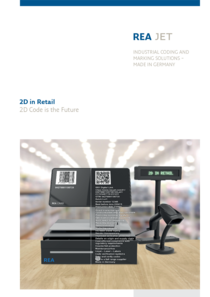

Hoge resolutie inkjetprinters, lasersystemen en etiketteertechnologie
Welk codeer- en markeersysteem is geschikt voor het printen van GS1 2D DataMatrix codes, QR code met GS1 Digital Link en DataMatrix codes met GS1 Digital Link?
CIJ technologie wordt de laatste jaren op veel gebieden gebruikt. Door de lage printresolutie voldoet de letterkwaliteit echter niet meer aan de hedendaagse eisen. Het gebruik van kleinkarakter inkjet printers om 2D-codes in goede kwaliteit en op hoge snelheid te printen is slechts beperkt geschikt, speciaal voor de vereisten van 2D kassacodes. Hoge eerste leespercentages, die vooral belangrijk zijn op het verkooppunt, kunnen niet worden bereikt met deze technologie.
De mogelijkheid bestaat om CIJ te vervangen door hoge resolutie TIJ technologie, lasersystemen of etiketteersystemen.
